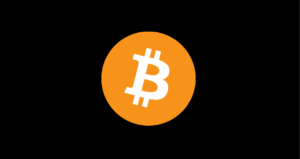Hyperinflation is a word that can stir up a lot of emotions, especially when it’s related to the U.S. economy. There have been instances in history where hyperinflation has wreaked havoc on economies, leading to significant challenges for individuals and businesses alike.
Hyperinflation occurs when prices escalate rapidly as a result of the currency’s value plummeting. It can be a devastating economic phenomenon, eroding the purchasing power of consumers and causing widespread uncertainty. In the context of the United States, hyperinflation is a scenario that many people fear but one that experts assert is highly unlikely given the country’s economic stability and the role of the U.S. dollar as a global reserve currency.
Several factors contribute to hyperinflation, such as excessive money supply growth, loss of confidence in the currency, and supply chain disruptions. However, the Federal Reserve, the central banking system of the United States, plays a crucial role in managing inflation through its monetary policy tools.
The Federal Reserve closely monitors key economic indicators such as the Consumer Price Index (CPI) and the Producer Price Index (PPI) to gauge inflationary pressures. By adjusting interest rates and controlling the money supply, the Federal Reserve aims to keep inflation at a moderate and stable level to support economic growth while preventing hyperinflation.
Cryptocurrencies have emerged as an alternative form of currency that operates independently of traditional banking systems and government authorities. While some proponents of cryptocurrencies view them as a hedge against inflation and currency devaluation, others caution about the volatility and regulatory uncertainties associated with digital assets.
Bitcoin, the first and most well-known cryptocurrency, operates on a decentralized network known as blockchain. Transactions are verified by network participants through a process called mining, which involves solving complex mathematical puzzles. The limited supply of Bitcoin, with a cap of 21 million coins, contrasts with the inflationary nature of fiat currencies.
Ethereum, another popular cryptocurrency, differentiates itself by enabling smart contracts and decentralized applications to be built on its platform. Ethereum’s native currency, Ether, fuels transactions and smart contract executions within the network.
The rise of decentralized finance (DeFi) projects built on blockchain platforms like Ethereum has brought innovative financial services such as lending, borrowing, and trading to a global audience. These projects aim to provide greater financial inclusion and accessibility while reducing reliance on traditional banking systems.
In conclusion, hyperinflation in the United States remains a remote possibility due to the country’s economic resilience and the Federal Reserve’s mandate to maintain stable prices. Cryptocurrencies offer an intriguing alternative to traditional financial systems, with unique characteristics that appeal to a diverse range of users. As the financial landscape continues to evolve, understanding the fundamentals of inflation, monetary policy, and the role of cryptocurrencies can empower individuals to make informed financial decisions.

